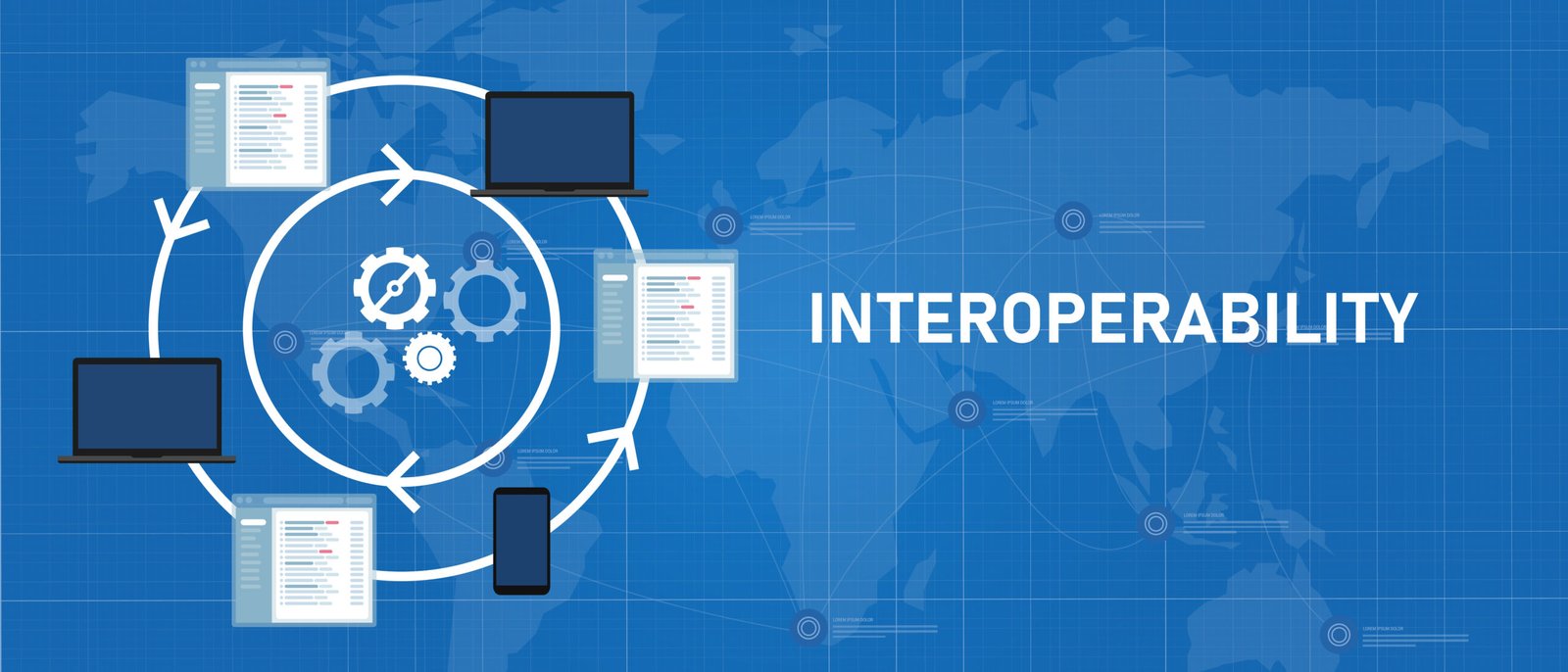The phrase web3 gaming trends 2025 is more than a forecast; it’s a roadmap for how interactive entertainment will evolve as blockchain moves from buzzword to baseline. After several boom-and-bust cycles, the sector has matured. Studios now talk less about speculative tokens and more about player ownership, user-friendly wallets, interoperable assets, and sustainable economies that can outlast hype. At the same time, technical leaps in layer-2 scaling, zero-knowledge proofs, and account abstraction are finally making on-chain experiences feel as smooth as traditional games.
In this comprehensive guide, we’ll map the shifts that will define web3 gaming in 2025. We’ll examine how design philosophies are changing from “play-to-earn” to play-to-own, why dynamic NFTs and on-chain identity will open creative frontiers, how gasless transactions and passkey wallets will fix onboarding, and where AI, modular blockchains, and ZK verification will matter most. Whether you’re a studio, investor, or player, understanding the leading web3 gaming trends 2025 can help you build, back, or choose experiences that last.
Why 2025 Is a Tipping Point for Web3 Games
The most important of the web3 gaming trends 2025 is that fundamentals finally align. Technology has matured, best practices are clearer, and gamer expectations have shifted from financial speculation to fun, fair progression, and real ownership. Developers are building for longevity, not quick token spikes, and the result is better game loops, better UX, and better economics.
From Play-to-Earn to Play-to-Own
Early cycles made token payouts the star. In 2025, the spotlight moves to asset sovereignty. Players expect to craft, win, or discover items, then trade, lend, or showcase them across ecosystems. That’s play-to-own: the value is in the permanence and portability of what you earn, not in a daily token stipend. Games that succeed will weave ownership into progression, where blueprints, skins, land, and badges serve as utility-bearing NFTs—granting access, improving abilities, or unlocking creative tools.
Quality-First Design Goes On-Chain
Another defining thread in web3 gaming trends 2025 is production quality. Web3 titles can’t rely on token momentum; they must stand on tight core loops, art direction, and content cadence. Studios are hiring veteran designers and treating blockchain as infrastructure, not a marketing hook. When crafting, matchmaking, tournaments, or marketplaces benefit from on-chain verifiability, they move on-chain. When they don’t, they stay off-chain. Players feel the difference as low friction and high retention.
Ownership, Identity, and Interoperability

A sustainable web3 gaming trends 2025 strategy hinges on three pillars: assets you truly control, identities that travel, and interoperability that’s additive rather than chaotic.
Dynamic NFTs and Composable Items
Static collectibles are giving way to dynamic NFTs whose metadata evolves with in-game actions. A sword that levels up, a pet that learns skills, a racing car whose on-chain part history affects performance—these are not gimmicks. They enable composable design, where items crafted in one experience can slot into another without breaking lore or balance. Expect upgrade trees, fusion mechanics, and affix systems to be expressed on-chain for transparency and tradability.
Safer Cross-Chain Bridges and App-Level Interop
Interoperability is a core promise of web3 gaming trends 2025, but it must be curated. Rather than forcing universal portability, leading studios will define “lore-compatible lanes”—clear rules for how a skin or title can appear in another world. Technically, this means safer bridges, canonical token standards, and app-level adapters that check provenance and authenticity. The result is playful crossover without economic exploits.
On-Chain Identity and Reputation
In 2025, on-chain identity becomes practical. Players use ENS-style names, soulbound reputation badges, and attestations to prove skill, sportsmanship, or creative contributions. That identity can be private-by-default but selectively revealed to unlock tournaments, creator payouts, or guild roles. With reputation-weighted matchmaking and anti-smurfing attestations, competitive play gets fairer.
UX Breakthroughs Remove Friction
No matter how strong the game design, onboarding must be instant. Among web3 gaming trends 2025, the UX pivot is seismic.
Account Abstraction and Passkeys
Account abstraction lets wallets behave like familiar app accounts. Players sign in with email, social login, or passkeys, while the game handles key management under the hood. Session keys authorize many actions in a single approval, making crafting, battling, or trading feel native. Recovery improves through social guardians, multi-device approvals, and time-locked failsafes, removing the fear of losing a seed phrase.
Gasless Transactions and Sponsored Actions
To mainstream audiences, gas is invisible. The best games in 2025 use gas sponsorship so minting, upgrading, or claiming rewards is free for everyday actions, with network fees batched in the background. Players only see costs where they make sense—like premium market listings or cross-game migrations.
Mobile-First Distribution Within Policy Lines
Mobile is where many players live, so web3 gaming trends 2025 include compliant, in-app flows for wallet linking, fiat on-ramps, and asset displays. Studios are building progressive web apps, native shells, and cloud streaming to navigate store policies while keeping inventory accessible. Expect clever hybrid approaches that show assets as “digital collectibles” and route trading via compliant web views.
Economics That Actually Work
The healthiest web3 gaming trends 2025 revolve around balanced tokenomics that reward play without destabilizing markets.
Smarter Token Sinks and Seasonal Design
Instead of endless emission, smart economies use sinks: durability repair, blueprint consumption, staking for perks, and seasonal resets that refresh demand. Items can break, mutate, or retire into cosmetic-only relics, which stabilizes supply. Developers include minimum viable sinks from day one, instrument player behavior, and tune sinks and sources like a live-ops science.
Stablecoins, Dual-Currency Models, and Clear Pricing
Players think in fiat terms. In 2025, most game prices sink and marketplace fees in stablecoins or soft currency, while governance or premium assets use a separate token with a capped supply and utility. This separation reduces churn from token volatility and simplifies regulatory and accounting treatment. It also makes creator royalties and tournament prizes more predictable.
Creator Monetisation and Player-Run Markets
One of the most exciting web3 gaming trends 2025 is the rise of creator economies. Map builders, modders, casters, and lore writers can mint and sell UGC blueprints, take a cut from permissioned marketplaces, and receive on-chain royalties. Because ownership is verifiable, secondary market success pays the original creator automatically. Studios win with a steady flow of fresh content; players win with thriving, player-run markets.
Technology Under the Hood
The stack powering web3 gaming trends 2025 looks different from 2021. It’s faster, cheaper, and purpose-built for games.
Layer-2s, Modular Appchains, and Data Availability
Games need high throughput. Expect leading titles to run on layer-2 rollups, app-specific chains, or modular stacks that separate execution from data availability. This architecture keeps fees low while maintaining security guarantees. For studios, the decision matrix focuses on finality times, gas predictability, tooling, and interoperability with major wallets and marketplaces.
ZK Proofs for Fairness and Anti-Cheat
Zero-knowledge proofs move from research to gameplay. They can verify card shuffles, fog-of-war, or hidden information without exposing secrets, and they can prove that client-side calculations—like damage rolls or loot drops—were computed honestly. ZK also underpins privacy-preserving leaderboards and age-gated content without leaking personal data.
AI and On-Chain Logic, Together
The pairing of AI with on-chain state unlocks new patterns. NPCs can remember players via on-chain events, dynamic quests can reference blockchain achievements, and AI-assisted creation tools can mint verifiably sourced assets. Studios are careful to store model outputs off-chain while anchoring authorship, licensing, and rarity on-chain. The result is content-rich games where blockchain ensures provenance.
Community, Governance, and Esports
Culture is the engine of retention. In 2025, web3 gaming trends emphasise player-led governance, fair competition, and creator-driven worlds.
DAOs and Guilds 2.0
Early guilds chased yield; Guilds 2.0 reward skill, contribution, and stewardship. DAO-like councils shape balance changes, approve map rotations, and allocate treasury budgets to community tournaments. Voting is reputation-weighted so veterans and builders carry real influence, while newcomers can earn voice through quests and contributions.
On-Chain Esports and Provable Tournaments
Esports in 2025 leans into on-chain brackets, prize escrow, and match proofs. Tournament integrity improves when rules, payouts, and anti-cheat checks are transparent. Spectators can buy dynamic commemorative NFTs tied to pivotal plays, and teams can share revenue splits verifiably with players and staff. This isn’t about collectibles for their own sake; it’s about trust in competitive results and revenue.
UGC and the Modding Renaissance
Thanks to royalties and provenance, modding has a business model. A dungeon designer can publish a procedural level pack as a token-gated blueprint, bundle it with art from licensed creators, and share revenue based on on-chain usage metrics. The mods that win become canon as studios integrate them into official seasons, keeping the content flywheel spinning.
Regulation, Security, and Player Protection
The most enduring projects in the web3 gaming trends 2025 era embrace compliance and safety as features, not burdens.
Compliance as Invisible UX
KYC, sanctions checks, and regional rules can feel clunky, but modern flows keep them off the critical path. Players can enjoy the game first, and only when they trade above thresholds, list high-value assets, or enter prize tournaments do they complete streamlined checks. Privacy-preserving attestations mean players prove eligibility without exposing sensitive data.
Security by Design
Studios ship with formal audits, bug bounties, and upgradable contracts guarded by time-locked multisigs. They sandbox critical logic and use pause switches for emergencies, with transparent governance around when and how they trigger. Client code moves toward open-source verifiability, enabling community audits of netcode and economy parameters.
Also Read: Gate Layer 2 Network Revolutionary Web3 Scaling Solution
What to Build in 2025: A Practical Playbook

The ideas behind web3 gaming trends 2025 translate into concrete steps for different stakeholders. Apply them and you’ll reduce risk while amplifying upside.
For Studios and Designers
Start with a fun, replayable core loop, then map where on-chain ownership augments the experience. Use account abstraction to hide complexity, sponsor gas for routine actions, and express progression-critical items as dynamic NFTs with in-game sinks.
Price consumables in stablecoins for clarity, and reserve any governance token for real utility, not hype. Ship with telemetry, tune sources and sinks weekly, and publish transparent economy changelogs so players trust the process.
For Publishers and Investors
Back teams that treat blockchain like infrastructure, not a headline. Look for modular stack choices that minimize cost, ZK-powered anti-cheat plans, and creator economy hooks with enforceable royalties. Assess retention cohorts, not just mint counts. Demand security budgets, clear compliance roadmaps, and mobile distribution strategies. A portfolio anchored in these web3 gaming trends 2025 signals can weather market swings.
For Players and Creators
Choose games that give you true control of what you make or win. Favor titles with gasless onboarding, transparent drop tables, and respected creators earning on-chain royalties. If you build, publish UGC blueprints with clear licenses and track usage on-chain to get paid automatically. Join guilds that value mentorship and contribution, not speculation.
Case Studies to Watch (Conceptual Patterns)
Without naming specifics, several patterns are emerging that embody web3 gaming trends 2025. Competitive battlers use ZK-verified randomness to keep outcomes honest while letting spectators mint moment NFTs linked to iconic plays.
Crafting-heavy RPGs run on appchains that keep gas near zero and store item genealogy on-chain so players can trace a legendary sword back to its first crafter. City builders adopt seasonal land permits rather than permanent land sales, keeping maps fresh and preventing early hoarding. These blueprints are widely applicable across genres.
Measuring Success in 2025
Vanity metrics faded. Teams now track Day-7 and Day-30 retention, on-chain engagement depth (number of contract interactions per active day), creator payout velocity, and marketplace churn. Success correlates with UX simplicity, economic clarity, and community governance that actually ships. The strongest projects publish public dashboards—a cultural shift toward accountability that aligns with the ethos of verifiable games.
The Long View: Why This Time Is Different
Cycles come and go, but the scaffolding of web3 gaming trends 2025 will persist. Ownership aligns incentives between studios and players. Composable assets and modding economies reduce content risk. ZK and modular chains finally square speed with trust.
And as compliance and security feel native, the stigma of “blockchain games” gives way to a simpler label: great games with real ownership. Ten years from now, many players won’t even know they’re on-chain—and that invisibility will be the ultimate sign of success.
Conclusion
The web3 gaming trends 2025 movement is not about inventing a new class of speculative apps; it is about elevating games with verifiable ownership, flexible economies, and player-first design. Expect to see dynamic NFTs, account abstraction, gasless UX, ZK-powered fairness, and creator royalties become table stakes. Studios that treat the chain as a tool, not a totem, will outlast those that chase token spikes. Investors will prize retention and verifiable revenue over mints.
Players and creators will find worlds where their time, skill, and imagination compound into lasting value. If you’re building, now is the moment to align game loops, economics, and infrastructure with these trends—and deliver the kind of experiences that make the term web3 gaming trends 2025 synonymous with fun, fairness, and true digital ownership.
FAQs
What does “play-to-own” mean in web3 gaming?
Play-to-own focuses on permanent, tradable ownership of items you earn or craft, instead of daily token payouts. Your gear, skins, or blueprints live as NFTs in a wallet you control, with utility inside the game and potential value in wider ecosystems.
How will account abstraction improve onboarding in 2025?
It lets players sign in with email or passkeys and transact without handling seed phrases. Combined with session keys and gas sponsorship, everyday actions feel like a normal game while still being on-chain and secure.
Are dynamic NFTs just cosmetics with extra steps?
No. Dynamic NFTs can encode progression, durability, skill trees, and ownership history that affect gameplay or access. They’re living items whose metadata changes based on what you do, and those changes are verifiable.
How do sustainable tokenomics work for web3 games?
They balance sources (ways assets enter) with sinks (ways assets leave or convert). Smart economies use stablecoin pricing, seasonal resets, blueprint consumption, and creator royalties to avoid runaway inflation or collapse.
Why are zero-knowledge proofs relevant to games?
ZK proofs allow verification of hidden information and randomness without revealing secrets. That means fair shuffles, honest rolls, anti-cheat checks, and even privacy-preserving leaderboards, all essential for competitive trust.


